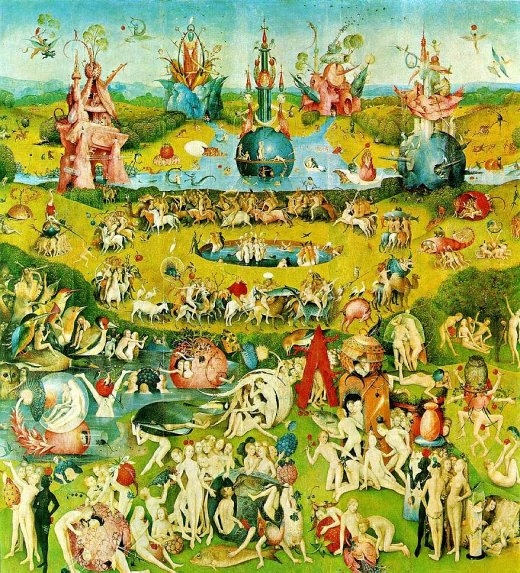
 BY ELIZABETH FIEND LIVING EDITOR Although there’s still a chill in the air and a bit of winter left, if you want to do a garden this year, start now. That’s right. The key to gardening is to be on top of everything. Gardening is based around the weather and the weather waits for no man — or woman. You probably have a growing mound of garden catalogs by now. A few arrive in my mailbox every day. Overwhelming! But If you don’t have catalogs, try buying a mail-order plant ONE time, and you’ll be flooded with garden catalogs for the rest of your life. What I do is just thin out from the very beginning. Divide the catalogs into categories like flowers, seeds, landscaping, accessories. I grow a lot of soft fruit, so I set aside catalogs that sell fruit as well. If you try to look through every single catalog, you’ll be paralyzed by too many options. So you must weed out from the start.
BY ELIZABETH FIEND LIVING EDITOR Although there’s still a chill in the air and a bit of winter left, if you want to do a garden this year, start now. That’s right. The key to gardening is to be on top of everything. Gardening is based around the weather and the weather waits for no man — or woman. You probably have a growing mound of garden catalogs by now. A few arrive in my mailbox every day. Overwhelming! But If you don’t have catalogs, try buying a mail-order plant ONE time, and you’ll be flooded with garden catalogs for the rest of your life. What I do is just thin out from the very beginning. Divide the catalogs into categories like flowers, seeds, landscaping, accessories. I grow a lot of soft fruit, so I set aside catalogs that sell fruit as well. If you try to look through every single catalog, you’ll be paralyzed by too many options. So you must weed out from the start.
After you’ve divided the catalogs into categories, start with the Buy Local buy philosophy. Sure, sure it helps dollars grow in your neighborhood economy, but there’s another overriding reason why this is a good idea. Buying a plant from a nursery located in an area with the same ecology as where you plan to put the plant is some extra insurance that it may grow happily in your yard. Yes, that plant from the nursery in New Mexico is gorgeous but face it, it’s just not going to take root around here even if the phrase “hardy enough for colder climates” is tossed about in the catalog’s description.
There are some big nurseries right here in Pennsylvania: Burpee’s, The Cook’s Garden among them. You can’t get much more local than that. Plus by buying local, you’ll be kinder to the environment by saving the fossil fuel with a shorter transport to your garden. There is one major downside to the Buy Local thing when it comes to mail order. The Feds. When you make a snail mail or Internet purchase from a company located in your home state, yikes, you’re going to be charged sales tax.
much more local than that. Plus by buying local, you’ll be kinder to the environment by saving the fossil fuel with a shorter transport to your garden. There is one major downside to the Buy Local thing when it comes to mail order. The Feds. When you make a snail mail or Internet purchase from a company located in your home state, yikes, you’re going to be charged sales tax.
Of course, not all the plants I desire can be obtained from Pennsylvania nurseries. So I move out geographically, just not too far. Ohio is looking pretty good to me this year and I’ve ordered my plants from Bluestone Perennials out of Madison; my seeds from Cook’s Garden, Warminster, PA.
You know about the hardiness zones right?
The hardiness zone, or just zone, was developed by the United States Department of Agriculture. Zones are based on the average annual minimum temperature over a five-year span. Numbers are assigned, and they make undulating bands across the map, much like you see on a weather forecast map. Zone 1 is the coldest, and here in Pennsylvania, we’re Zone 6. (Yeah, the zone thing is starting to get a little thorny right now due to global warming, but we won’t get into that today.)
A good, reliable catalog will list the hardiness zone of each plant. If it doesn’t, I’d ditch that catalogue right from the start and move on to a more informative and honest supplier.
The zone is a great indicator, but it only tells one part of the story. The hardiness zone only talks lowest temperatures. Plants are also picky about the high temperatures. And they care deeply about how much rain there is, or how long between rain, or what the snow cover is and how likely an early or late freak frost is in your ‘hood. And let’s not forget the number of hours of daylight. So look at the big picture, not just hardiness zone.
Code words.
 The catalogs can be sneaky with their wording and descriptions. Buying plants that are inappropriate for your area is one of the top reasons for garden frustration and failure. It wastes a lot of dough too. So be on guard.
The catalogs can be sneaky with their wording and descriptions. Buying plants that are inappropriate for your area is one of the top reasons for garden frustration and failure. It wastes a lot of dough too. So be on guard.
There are a ton of code words in garden catalog land. “Woodland” equals shady, we know that, but it’s also a code word for wet. If the area under that tree out back isn’t a moist environment, forget about it, it’s not suitable for that plant. Go for the plant labeled “shade” or “part-sun” instead.
Other code words like “needs winter protection” mean that the plant probably won’t do well in Pennsylvania even if it says hardy up to Zone 6. “Plant along pond or stream” is code for “needs lots of water,” While “drought resistant” indicates the plant will probably die if there’s too much rain. “May bloom first year” means it won’t bloom until the second year. And phrases like “self-seeds readily” and “a good neutralizer” imply that the plant has the potential to be a garden pest, so plant with caution.
Also consider your soil and the location of your garden when selecting plants. Clay soil? Sandy soil? Full sun, partial shade? Which do you have? Choose plants accordingly. You’re doomed to failure if you try to force a plant into an inappropriate location.
Seeds.
You have to be realistic about selecting seeds as well. Unless you’re an experienced gardener I would recommend staying away from trying to grow perennial plants from seeds. Stick with annuals and you’ll be a lot happier.
As for food, one of the main things to look for when selecting seeds is the length of the growing season. I stick with vegetables seeds that will go from being in my hand to ready to eat in the range of 120 days. Plant May 1, eat Sept. 1, that is of course if everything goes according to your plan, which it never does, not exactly.
My order this year:
Plants: Songbird Cardinal columbine; Blue Angel and Great Expectations hostas; Southern Charm verbascum (a cascade of sherbet-colored blossoms, so lovely!); D. Agatha dianthus (aka carnations, spicy, edible flowers!); Avante Garde clematis; Mt. St. Helens, H. Regina and Dale’s Strain coral bells. Total cost = $122.00.
Seeds: Four packs of various lettuce; greens: chard, kale, bok choi, (the Fiends are green inside and out!); cucumbers; sweet and hot pepper mix; summer squash mix; tomatoes: Brandywine, Genovees and Sun Gold Cherry; basil: Siam Queen, Bounty, Mammoth and Holy; parsley; nasturtium mixed (these edible flowers and leaves turn a bagel and cream cheese into haute cuisine); cosmos; larkspur; and for the birds, sunflowers. Total cost = $85.00.
Right, gardening is not cheap. But the yard will be lookin’ good, and yum, we’ll be eatin’ good this summer!
[Artwork: The Garden Of Earthly Delights by HIERONYMOUS BOSCH]
ABOUT THIS COLUMN: At no time in recorded history have we possessed so much knowledge about health and nutrition, or had such vast and effective means for disseminating that knowledge. Yet for all that, we essentially live in a high-tech Dark Age, with most of the global population ignorant or confused about the basic facts of their own biology. How did this happen? Well, that alone is a whole six-part miniseries, and this ain’t the Discovery Channel. Suffice to say that the bottom line of many a multi-national corporation depends on that ignorance, and vast sums of money are expended to keep us fat, dumb and happy. But mostly fat. There was a time when newspapers saw it as their duty to truth squad the debates over health, science and the environment, but that’s a luxury most papers can no longer afford — not when there are gossip columnists to be hired! To help remedy this violation of the public’s right to know, Phawker publishes the JUNK SCIENCE column by Elizabeth Fiend, beloved host of the BiG TeA PaRtY. Every week, Miss Fiend connects the dots to reveal a constellation of scientific facts that have been hiding in plain sight, scattered across the cold, vast reaches of the Internet. With a background in punk rock and underground comics, and a long career as a library researcher, Miss Fiend doesn’t pretend to be a scientist or an expert. She does, however, know how scientific facts become diluted by corporate-sponsored non-facts, and every week she separates the smoke from the mirrors. Why? Because she loves you.
